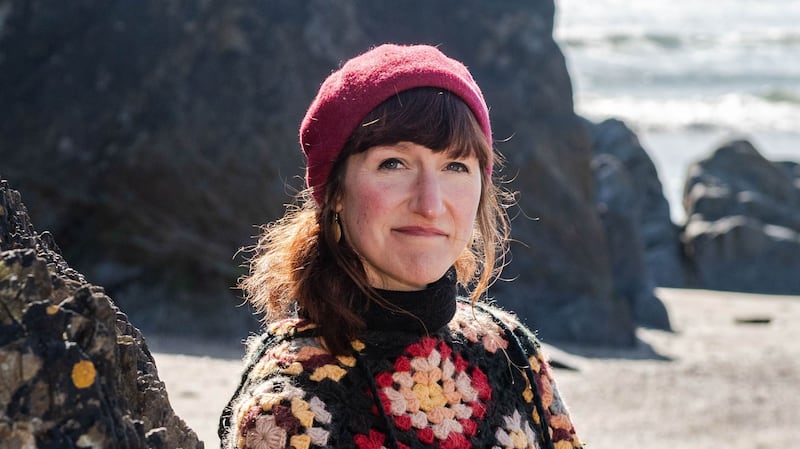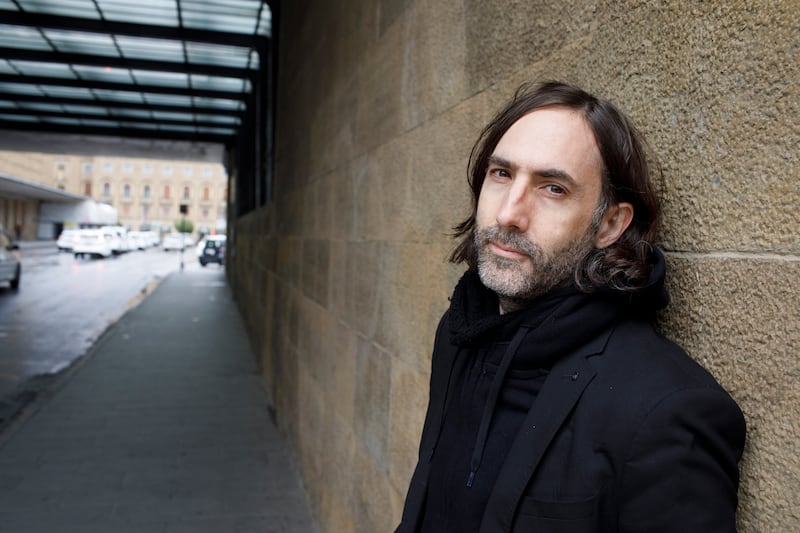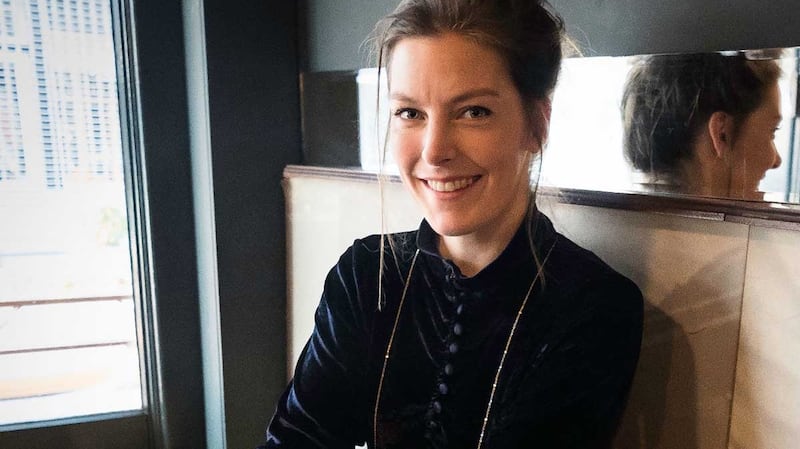In a majority of Irish novels, especially since the great meltdown of 2008, the climate crisis appears as a background hum, ominously underscoring mundane routines of daily life. That note was sounded in a striking fashion in Mike McCormack’s Solar Bones, where the narrative voice pointedly remarks: “there’s nothing as tiresome as the apocalypse but take it from me, there’s something worrying going on here”.
When McCormack wrote those lines, the apocalypse might have appeared to have been only financial in nature. But the novel also invites its readers to pay attention to that which has been made invisible, the connection between financial sovereignty of a nation and the existential security of a civilisation: “all those zeroes, glossy and hard, so given to viral increase – appear like the indices and magnitudes of a new cosmology, the forces and velocities of some barren, inverse world – a negative realm that, over time will suck the life out of us”.
Financial speculation and capitalist accumulation leave spatial, temporal and planetary traces that Irish writers ask us to pay special attention to. The fear of being evicted from a homely Earth is a recurring note. Sara Baume’s A Line Made By Walking is titled after an artwork by British landscape artist Richard Long. Long traced and retraced his steps along a straight line so that an imprint of his path was clearly visible on a field of grass. He then took a black and white photograph of the result. A visual reminder of humanity’s carbon footprint, Long’s 1967 artwork shares much of its critical energy with Baume’s book.
The protagonist Frankie is conscious of humanity’s extractive excesses that feed its consumerist gluttony. “What I could see was the whole of the world rolled flat. Each of the continents, every island. And they were swilling, stuffing up the sea, and I was screaming … there would be no space left for me to perch on the grossly overextended earth”. At once a reflection on ocean pollution and a depiction of consumerism’s connection to contamination – the sea is full of stuff – Baume’s novel is notable in its extended critique of environmental grief and anxiety.
READ MORE
Financial collapse signalled a uniquely ecocritical response from Irish authors who saw in economic decrepitude reflections of an environmental urgency. Claire Kilroy’s allegory, The Devil I Know, tells the story of the Thirteenth Earl of Howth, a latter-day Finnegan, who resurrects from his deathbed in Belgium and returns to Ireland. In it, the fickleness of fortune and the fecklessness of financial speculation are cast as a viral disease: Celtic Tiger Ireland’s “dollar-green towers” were “a contagion that had ripped through Dublin”.

Kilroy’s novel is historically fine-tuned and prophetically sound. She invokes connections between what one political scientist describes as the three “dwelling places” of humanity: economy, ecology and politics. In the novel, the Famine is a historical counterpoint to the financial collapse: “It was the same crowd that had attended Hickey’s barbeque. Yes, the Hunger was there. The Hunger was always there. The Hunger will always be with us.”
Less than a decade later, the less metaphorical virus of Covid-19 prompted scrutiny about the insatiable hunger of global capital which has thinned out buffer zones between industry and animal habitats. We inhabit a time of exponential ecosystems collapse; scientists agree that we are living through the sixth extinction (the fifth marked the end for the dinosaurs), a dire aspect of anthropogenic climate change. Writers have been acutely aware of how the immense crisis of the sixth extinction is made invisible in daily life.
[ The Climate Crisis: an essential guideOpens in new window ]
Danielle McLaughlin’s short story collection, Dinosaurs on Other Planets, wears such a sensibility frankly; the title signals extinction. In the short story, The Act of Falling, unnatural avian deaths are nonchalantly narrated. It is as if the author mimics the carelessness of business-as-usual lives in the face of cascading climate-related crises. “Birds, it seemed, were the next great heralds of the apocalypse, and Finn had decided it was important to catch them in the act of falling.”
Contemporary Irish literature, like others from erstwhile colonies, may be said to be especially attuned to the silences that envelop social and cultural crises. For although climate change is primarily an environmental question, it also reveals a culture of carelessness rather than care, a culture of inattention rather than alertness. Those possibly have as much to do with anthropogenic carbon emissions as global industries and capital, which are ultimately offshoots of such indifference.

Poetry cannot change the world, said Seamus Heaney once. But he also went on to clarify that what poetry could do is to allow the world to be viewed afresh. The same could be said about the genre of climate fiction, or cli-fi, which has witnessed a marked ascendancy in contemporary world literature. Oftentimes such literature pointedly opens with mundane realities until an enigmatic apocalypse unfolds. The truth, of course, is that climate change creeps up on human history unlike a Hollywood film.
In all cases, however, such fictional narratives reveal aspects of the multiple scales along which climate breakdown occurs. Climate change, resource scarcity, species extinctions, the erasure of the commons and fascist politics are not simply rhetorical devices to showcase different themes of climate fiction. Those aspects feature together because they have a shared grammar and are quintessentially related. Climate change is a cultural problem and needs cultural solutions at least equal in measure to technical ones.
Even when the environmental factors leading up to collapse are muted, as in Paul Lynch’s Prophet Song, novels depict a climate-changed world. Lynch’s dystopian novel of authoritarian Ireland appears remarkable only because fascism seems distant from the country’s liberal present. Nonetheless, such authoritarian rule – embodied by the flayed, interned, and those fleeing violence – is often a composite of deep injustices, contracting resources, climate pressures and neoliberal politics, as global events surrounding extreme heat, food and water scarcity, and “forever wars” attest.
There are other narratives, oftentimes set in the Global South and written in indigenous languages, that tell similar stories. But Lynch points this out himself in the novel’s final moments: “The end of the world is always a local event, it comes to your country and visits your town and knocks on the door of your house and becomes to others but some distant warning, a brief report on the news, an echo of events that has passed into folklore.”

Climate fiction demonstrates the connective threads between local tragedies and global threats, sometimes via panoramic visions of Earth. Although set in Ireland, for example, Solar Bones envisions “longitudes and latitudes which demark … national borders”. The visual economy distinguishes contemporary Irish climate fiction from the literature of globalisation circulating at the end of the last century, which graphed routes taken by “cosmopolitans” on transcontinental jets. The earth is a character in Irish climate fiction.
In 2020, images of empty and silent city streets pervaded Irish media as cocooning citizens sanctuaried in solitude. Kevin Barry noted how “we’re all having a shockin’ dose of the wombles” over Covid-19. Barry’s own narratives are replete with references to the climate crisis but one author’s comments in an Irish Times article stood out for me. Caoilinn Hughes noted: “The biggest issue we face as a species is not a national issue; it’s global. The climate crisis is a pandemic far greater than Covid-19, but Covid-19 is training us to deal with a pandemic.”
Hughes published a remarkable novel entitled The Alternatives this year whose exceptional prose vigorously matches its scientific acuity. The only other novel that achieves this synchronicity is Kim Stanley Robinson’s magisterial The Ministry for the Future. Hughes’s novel is remarkable for several reasons. Its planetary envisioning, which marks the book’s opening, is not simply spatial but also temporal. Olwen, the novel’s main protagonist, explains geological processes to her university class: “We’re a wreck, she says. Ireland is one big crash site, where the ancient continents Laurentia and Gondwana collided like two humungous cruise liners ... long before the nouveau riche were evolved to populate them.”

Origin stories are dubious because they are politically motivated. Nonetheless, the geological record has never been up for debate and it is an excellent place to start. Olwen takes some liberty in her explanations: “And here we stand, sifting through the evidence of that collision in our desk organisers, all of us above sea level ... for another decade or two anyways.” Her solemn joke hides a deeper truth; to be deeply “unnerved” about evolving effects of the climate crisis is “not paranoia”.
Olwen is desperately trying to engage an audience, just as climate scientists do in the Annual Bulletin of the Dystopian Society (also called the UN’s IPCC report) which summarises research and predictions on climate change. The latest report is the lengthiest of them all, running to thousands of pages, and reads as if it is a gothic novel. Words such as “scary” and “unprecedented” are not ones we associate with scientific rhetoric. It is with the same degree of awareness of the facts and our ability to gloss over them carelessly, with which Hughes’s novel is written.
There is no information deficit on the climate crisis. But there certainly is, as Amitav Ghosh reminded us, an imaginative poverty in understanding its political and cultural roots that might aid in confronting its effects in an impactful and equitable manner. Olwen has learnt to be wary: “The ozone levels were stabilising, she says, when I was a fresher. We were awful naive.” It is exactly such naivety and business-as-usual carefreeness that climate-literate Irish narratives are pointedly addressing.
Malcolm Sen is associate professor at the University of Massachusetts Amherst. He is the editor of A History of Irish Literature and the Environment (Cambridge University Press, 2022), and co-editor of Race in Irish Literature and Culture (Cambridge University Press, 2024)












